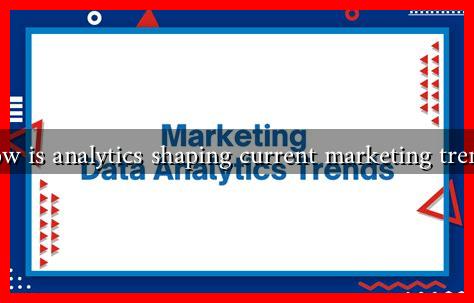-
Table of Contents
How is Analytics Shaping Current Marketing Trends?
In the digital age, data is often referred to as the new oil. As businesses strive to understand their customers better and optimize their marketing strategies, analytics has emerged as a critical tool in shaping current marketing trends. This article explores how analytics is transforming marketing practices, enhancing customer engagement, and driving business growth.
The Rise of Data-Driven Marketing
Data-driven marketing is the practice of using data to inform marketing decisions. With the advent of advanced analytics tools, marketers can now gather, analyze, and interpret vast amounts of data to create targeted campaigns. This shift towards data-driven strategies is evident in several key areas:
- Customer Segmentation: Analytics allows marketers to segment their audience based on various criteria such as demographics, behavior, and preferences. This enables personalized marketing efforts that resonate with specific groups.
- Predictive Analytics: By analyzing historical data, businesses can predict future customer behavior. For instance, Netflix uses predictive analytics to recommend shows based on users’ viewing history, significantly enhancing user engagement.
- Performance Measurement: Analytics provides real-time insights into campaign performance, allowing marketers to adjust strategies on the fly. According to a report by HubSpot, companies that use analytics are 5 times more likely to make faster decisions than their competitors.
Enhancing Customer Experience
Analytics is not just about numbers; it’s about understanding the customer journey. By leveraging analytics, businesses can enhance customer experience in several ways:
- Personalization: Brands like Amazon utilize analytics to offer personalized recommendations, improving customer satisfaction and increasing sales. A study by Epsilon found that 80% of consumers are more likely to make a purchase when brands offer personalized experiences.
- Customer Feedback Analysis: Tools like sentiment analysis help businesses gauge customer opinions from social media and reviews. This feedback loop allows companies to refine their products and services based on real customer insights.
- Optimizing Touchpoints: Analytics helps identify which touchpoints in the customer journey are most effective. For example, a study by Google found that 53% of mobile site visits are abandoned if a page takes longer than three seconds to load, highlighting the importance of optimizing digital experiences.
Case Studies: Success Stories in Analytics-Driven Marketing
Several companies have successfully harnessed analytics to drive their marketing strategies. Here are a few notable examples:
- Coca-Cola: The beverage giant uses data analytics to understand consumer preferences and optimize its marketing campaigns. By analyzing social media data, Coca-Cola can tailor its messaging to resonate with different demographics, leading to increased brand loyalty.
- Starbucks: Starbucks employs a robust analytics framework to enhance customer engagement. Their loyalty program collects data on customer purchases, allowing the company to send personalized offers and recommendations, resulting in a 20% increase in sales from loyalty program members.
- Spotify: Spotify uses analytics to curate personalized playlists for users, enhancing user experience and retention. Their “Discover Weekly” feature, which suggests new music based on listening habits, has been a game-changer in user engagement.
The Future of Marketing Analytics
As technology continues to evolve, the role of analytics in marketing will only grow. Emerging trends include:
- Artificial Intelligence (AI): AI-driven analytics tools are becoming more sophisticated, enabling deeper insights and automation in marketing strategies.
- Real-Time Data Processing: The ability to analyze data in real-time will allow marketers to respond instantly to customer behavior and market changes.
- Integration of Omnichannel Data: As consumers interact with brands across multiple channels, integrating data from these touchpoints will be crucial for a holistic view of customer behavior.
Conclusion
Analytics is undeniably shaping the landscape of modern marketing. By leveraging data-driven insights, businesses can enhance customer experiences, optimize marketing strategies, and ultimately drive growth. As we move forward, the integration of advanced analytics tools will continue to redefine how brands connect with their audiences. Companies that embrace this shift will not only stay competitive but also foster deeper relationships with their customers.
For more insights on how analytics is transforming marketing, check out resources from HubSpot and Forbes.

